
Scenedesmaceae is a family of green algae in the order Sphaeropleales. Scenedesmus algae are commonly found in freshwater plankton. The former family Coelastraceae is considered a synonym of Scenedesmaceae.
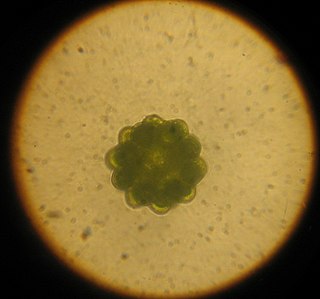
Coelastrum is a genus of green algae in the Scenedesmaceae family. It is a common component of the phytoplankton in freshwater habitats such as ponds, lakes, waterfalls, and temporary pools of water, particularly eutrophic ones. The genus has a more or less cosmopolitan distribution, although some species appear to have more restricted geographical distributions.
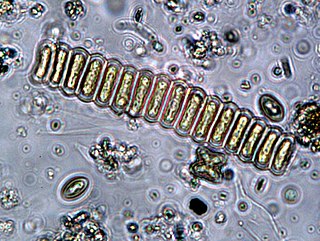
Scenedesmus is a genus of green algae, in the class Chlorophyceae. They are colonial and non-motile. They are one of the most common components of phytoplankton in freshwater habitats worldwide.

Selenastraceae is a family of green algae in the order Sphaeropleales. Members of this family are common components of the phytoplankton in freshwater habitats worldwide. A few species have been found in brackish and marine habitats, such as in the Baltic Sea.
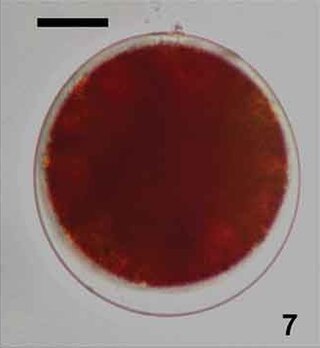
Chlainomonas is a genus of algae in the family Chlamydomonadaceae. They are found in freshwater habitats or on snow, where they are one of the main algae responsible for causing watermelon snow.
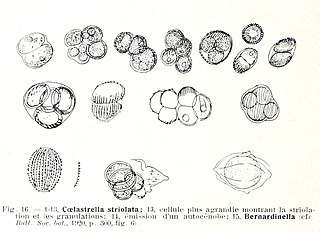
Coelastrella is a genus of green algae in the family Scenedesmaceae. It is currently classified in the subfamily Coelastroideae.

Desmodesmus is a genus of green algae in the family Scenedesmaceae. It is the only chlorophyll-containing organism known to have caused human infections in immunocompetent individuals. All known cases involved open injuries occurring in fresh water.

Dimorphococcus is a genus of fresh water green algae in the family Scenedesmaceae. It is found as a component of the phytoplankton of freshwater ponds, lakes, and peat bogs. It is widespread, but usually not very common.
Enallax is a genus of green algae in the family Scenedesmaceae. It is found in freshwater habitats, such as peat bogs or wet rocks.

Hariotina is a genus of green algae in the family Scenedesmaceae. They are classified in the subfamily Coelastroideae.

Lobomonas is a genus of green algae in the family Chlamydomonadaceae, found in freshwater habitats. Although it is widely distributed, it is a rare genus.
Palmellopsis is a genus of green algae, specifically of the Palmellopsidaceae. They are either planktonic or attached to substrates in fresh water, or in aeroterrestrial habitats.
Raphidocelis is a genus of green algae in the family Selenastraceae. They are found in freshwater habitats.

Selenastrum is a genus of green algae in the family Selenastraceae. It is common in freshwater habitats around the world. Most species prefer temperate or warm-temperate waters.

Stigeoclonium is a genus of green algae in the family Chaetophoraceae. There are currently 52 accepted species within this group. However, recent phylogenetics have identified that this group is likely polyphyletic and will need reassessment.
Struvea is a genus of green macroalgae in the family Boodleaceae.

Trentepohlia is a genus of filamentous chlorophyte green algae in the family Trentepohliaceae, living free on terrestrial supports such as tree trunks and wet rocks or symbiotically in lichens. The filaments of Trentepohlia have a strong orange colour caused by the presence of large quantities of carotenoid pigments which mask the green of the chlorophyll.
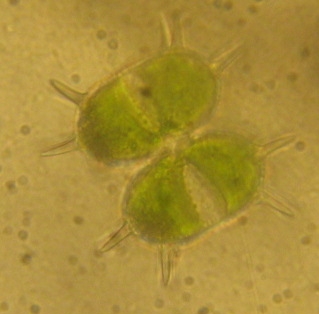
Xanthidium is a genus of green algae, specifically of the Desmidiaceae.

Tetradesmus obliquus is a green algae species of the family Scenedesmaceae. It is commonly known by its synonym, Scenedesmus obliquus. It is a common species found in a variety of freshwater habitats.














